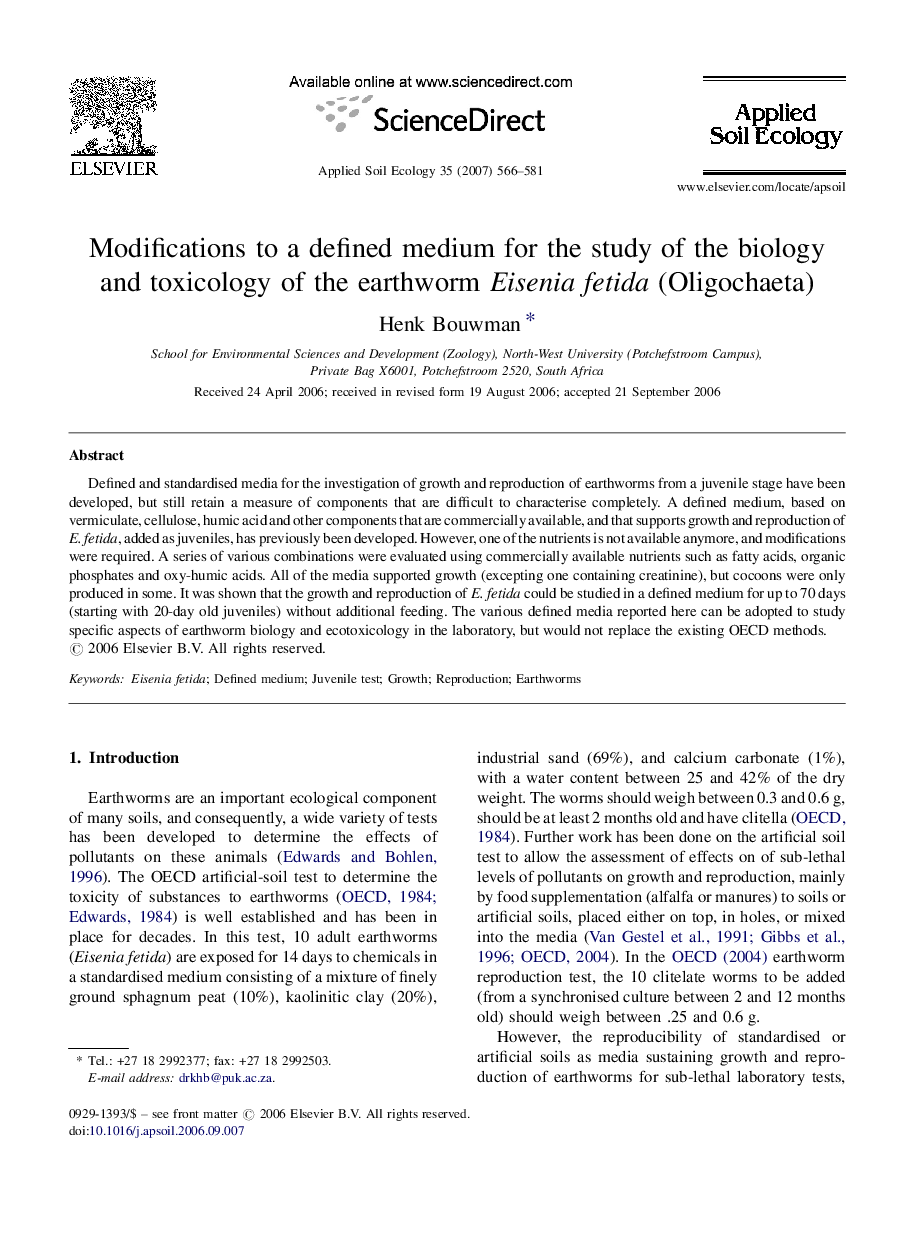| Article ID | Journal | Published Year | Pages | File Type |
|---|---|---|---|---|
| 4383248 | Applied Soil Ecology | 2007 | 16 Pages |
Defined and standardised media for the investigation of growth and reproduction of earthworms from a juvenile stage have been developed, but still retain a measure of components that are difficult to characterise completely. A defined medium, based on vermiculate, cellulose, humic acid and other components that are commercially available, and that supports growth and reproduction of E. fetida, added as juveniles, has previously been developed. However, one of the nutrients is not available anymore, and modifications were required. A series of various combinations were evaluated using commercially available nutrients such as fatty acids, organic phosphates and oxy-humic acids. All of the media supported growth (excepting one containing creatinine), but cocoons were only produced in some. It was shown that the growth and reproduction of E. fetida could be studied in a defined medium for up to 70 days (starting with 20-day old juveniles) without additional feeding. The various defined media reported here can be adopted to study specific aspects of earthworm biology and ecotoxicology in the laboratory, but would not replace the existing OECD methods.
